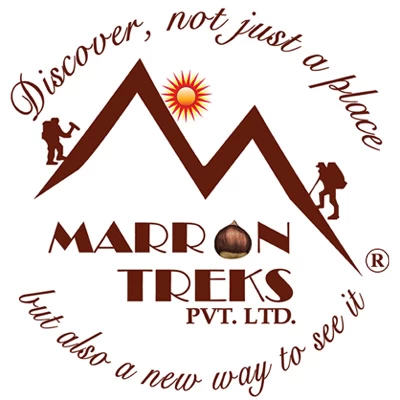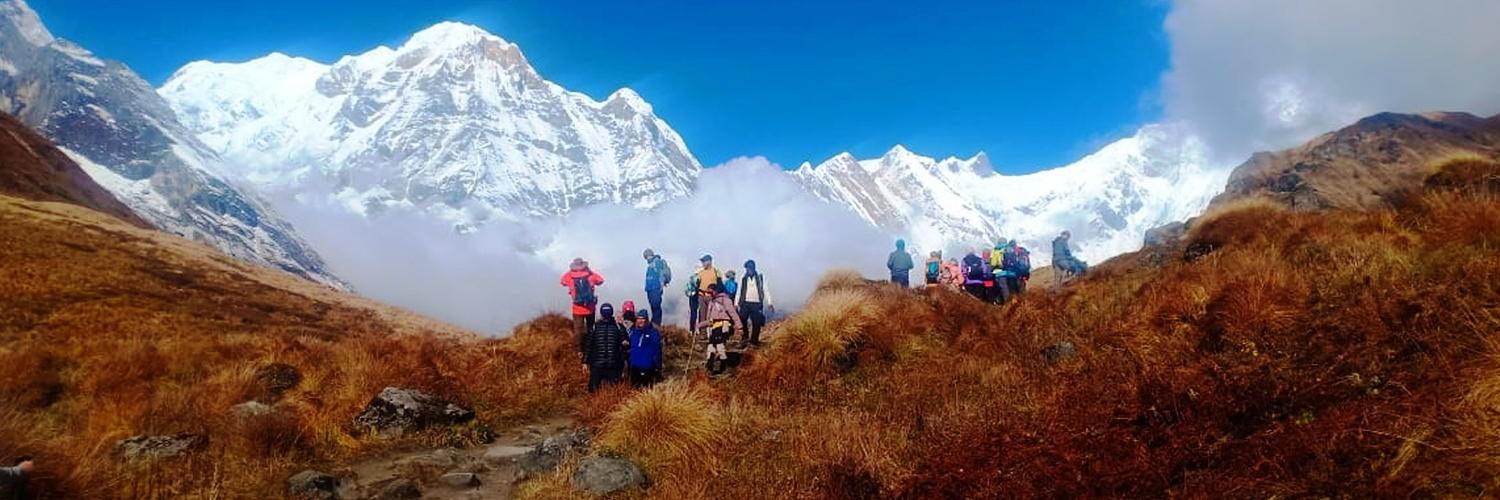Nepal is renowned as one of the premier trekking destinations globally, attracting adventurers with its stunning landscapes, diverse cultures, and iconic mountain ranges, including the Himalayas. The country offers a variety of trekking routes suitable for all levels of trekkers, from beginners to seasoned mountaineers. Nepal offers some of the world's most famous trekking routes. Trekking in Nepal is a once-in-a-lifetime experience that combines breathtaking landscapes and a spectacular Himalayan panorama with cultural immersion.
Types of Trekking
- Teahouse Trekking
Teahouse Trekking is staying in small lodges better known as "teahouses" along the route, providing food and accommodation. It is popular in well-established trekking regions like the Annapurna, Everest, Manaslu and Langtang areas.
- Camping Trekking
Camping Trekking requires carrying all essentials, including tents, food, and cooking equipment. It is ideal for exploring less-developed trekking routes or remote areas like Dolpo and Kanchenjunga. The trek involves a full support crew, including guides, cooks, and porters.
Popular Trekking Regions
- Everest Region
Home to the world's highest peak, Mount Everest, this region offers iconic treks like the Everest Base Camp Trek and the Gokyo Lakes Trek. Trekkers experience high altitudes, Sherpa culture, and stunning mountain vistas. Click Here
- Annapurna Region
Known for its varied landscapes, this region includes the popular Annapurna Circuit and Annapurna Base Camp Treks. Trekkers encounter lush forests, terraced fields, and diverse ethnic communities. Click Here
- Langtang Region
Close to Kathmandu, the Langtang Valley Trek offers beautiful views of the Langtang Himalayas, while the Tamang Heritage Trail provides a cultural experience through traditional Tamang villages. Click Here
- Manaslu Region
The Manaslu Circuit Trek is a less crowded but equally rewarding trek that encircles Mount Manaslu, the eighth-highest peak in the world. This trek features challenging terrain and rich cultural encounters. Click Here
- Remote & Restricted Region
Remote and rugged, the Upper Dolpo Trek is for seasoned adventurers seeking solitude and unspoiled beauty. Highlights include ancient monasteries, high passes, and crystal-clear lakes. Click Here
Trekking Grades
- Easy Treks
Suitable for beginners and families, these involve shorter walks on well-defined paths with gentle ascents. Examples include the Ghorepani Poon Hill Trek and the Royal Trek.
- Moderate Treks
Require a reasonable fitness level and include longer walking days, higher altitudes, and steeper paths. The Annapurna Base Camp and Langtang Valley Treks are popular moderate treks.
- Challenging Treks
Designed for experienced trekkers, these routes involve demanding terrain and significant altitude gain, such as the Everest Base Camp and Manaslu Circuit Treks.
- Strenuous Treks
The most demanding treks, requiring excellent fitness and experience with high altitudes and rough terrain. Examples are the Upper Dolpo and Kanchenjunga Base Camp Treks.
Best Time to Trek
- Autumn (September to November)
This is the peak trekking season with stable weather, clear skies, and moderate temperatures.
- Spring (March to May)
Another popular season, marked by blooming rhododendrons and pleasant weather
- Winter (December to February)
Colder with possible snow at higher altitudes, suitable for lower altitude treks.
- Monsoon (June to August)
Less crowded but with heavy rains and leeches, making it ideal for rain-shadow areas like Upper Mustang and Dolpo.
Trekking Permits
- TIMS (Trekkers’ Information Management System) Card is required for most of the treks in Nepal
- Conservation Area and National Park Permits: Necessary for treks in specific regions like the Annapurna Conservation Area or Sagarmatha National Park
- Restricted Area Permits: Required for regions like Upper Mustang, Manaslu, and Dolpo, often necessitating a guide and a group.


